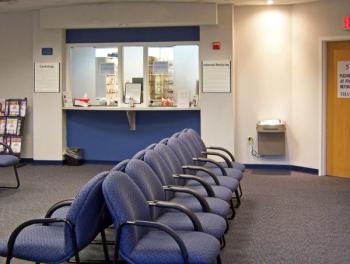
Direct-acting antiviral combination effective in hard-to-treat hepatitis C virus genotype 3
Real-world study shows efficacy of sofosbuvir/velpatasvir for 12 weeks
A combination of sofosbuvir/velpatasvir for 12 weeks in patients with hepatitis C virus (HCV) genotype 3 infection shows overall high efficacy and safety in a real–world setting, according to a new study.
Most first–generation HCV protease inhibitors and nonstructural protein 5A (NS5A) inhibitors have been less effective in genotype 3 infection, particularly among patients with cirrhosis, prior interferon treatment failure, and resistance–associated substitutions. Genotype 3 infections, which account for 25 percent of all HCV infections, are still considered difficult to treat even in the era of interferon–free treatments.
The combination of velpatasvir, a second–generation, pangenotypic HCV NS5A inhibitor, along with the HCV NS5B polymerase inhibitor sofosbuvir, is a once-daily, oral direct-acting antiviral (DAA) regimen for the treatment of HCV genotypes 1 to 6. “However, sustained virologic response (SVR) rates were lower in HCV genotype 3 infection compared to other genotypes, particularly in treatment–experienced cirrhotic patients,” wrote the researchers, led by Johann von Felden, MD, of the University Medical Center Hamburg-Eppendorf in Hamburg, Germany.
The researchers published their
Von Felden and colleagues conducted a multicenter, cohort study of 293 genotype 3 patients, median age 48 years, from 10 treatment centers across Germany. SVR was assessed 12 weeks after end–of–treatment (SVR12).
One-quarter of the patients were cirrhotic and 21.8 percent were treatment–experienced, including 4.1 percent who had taken DAAs. Baseline NS5A RASs were detected in 11.2 percent of the patients. Ribavirin was added in 5 percent of non-cirrhotic and more than half (58.9 percent) of cirrhotic patients.
The results show that 12 weeks of sofosbuvir/velpatasvir with and without ribavirin resulted in SVR12 in 95.9 percent of patients in a modified intention–to–treat analysis and 99.5 percent in a per–protocol analysis.
“Previous real–world data of patients with HCV genotype 3 infection, who were treated with sofosbuvir–based regimens not containing velpatasir, had shown inferior efficacy compared to the respective approval trials, particularly in patients with cirrhosis and/or other negative predictive baseline factors,” according to the researchers. In contrast, their data mirror the results of the sofosbuvir/velpatasvir ASTRAL–3 clinical trial, with an overall SVR rate of 95 percent.
A high or medium level of NS5A RAS was not associated with lower SVR12.
Only one virological relapse occurred in a cirrhotic patient previously treated with sofobuvir/ribavirin. No treatment–related major adverse events occurred.
“In our study, 8 out of 9 sofosbuvir pre–treated patients achieved SVR12, despite receiving only 12 weeks of therapy. Although the patient numbers are too small to draw any definitive conclusions, we believe that retreatment with sofosbuvir/velpatasvir plus ribavirin for 12 weeks in sofosbuvir pre–treated patients may be feasible in some cases, particularly when there are contraindications to voxilaprevir or glecaprevir/pibrentasvir (for example, decompensated cirrhosis),” the researchers wrote.
Also, 8 of 9 patients with decompensated cirrhosis achieved SVR12 with the combination plus ribavirin. “Despite the small number of patients, our data are encouraging and confirm the high efficacy of sofosbuvir/velpatasvir plus ribavirin in decompensated cirrhosis,” they wrote.
Newsletter
Stay informed and empowered with Medical Economics enewsletter, delivering expert insights, financial strategies, practice management tips and technology trends — tailored for today’s physicians.















